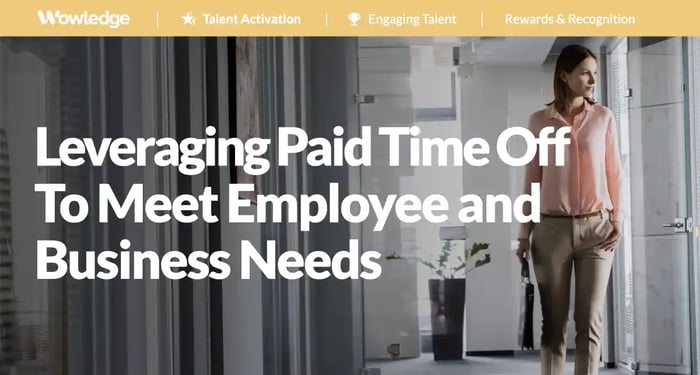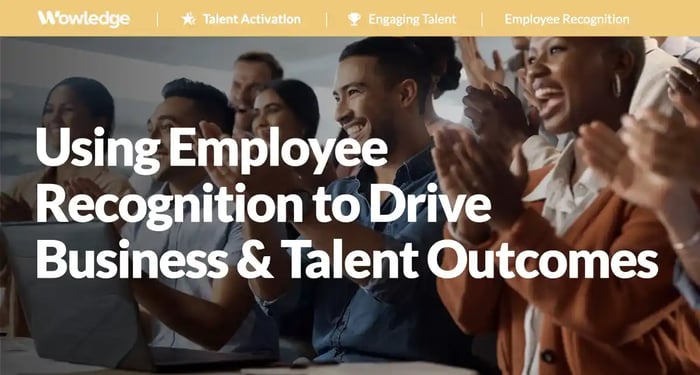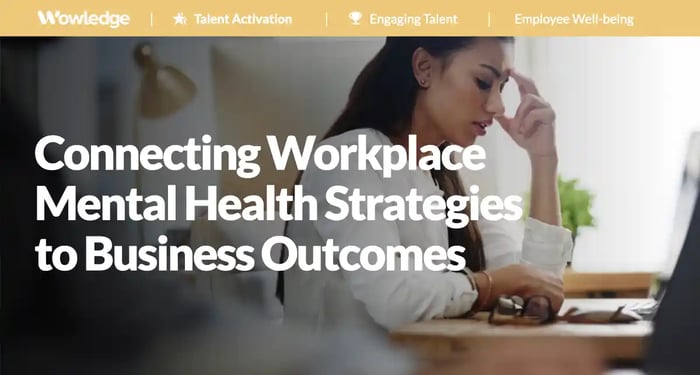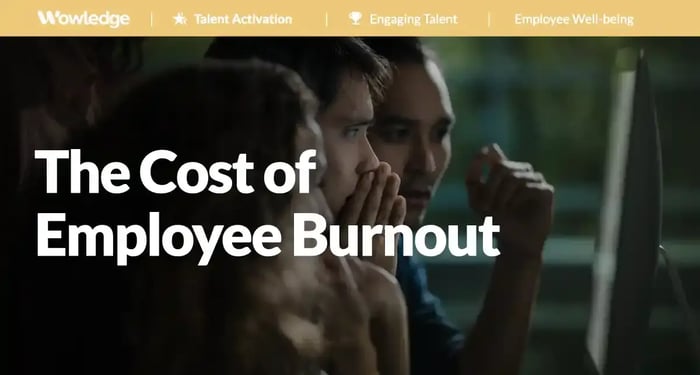As we enjoy the holidays or summer months, managing to squeeze in extra time with families and friends or enjoy a trip, it’s a great time to reflect upon the state of our most common vacation times and the reasons why they exist. The kids are out of school, and there are plenty of activities we might consider to help us disconnect and recharge. However, what is interesting is a) how many workers cannot enjoy paid time off and b) how few can feel comfortable taking the time off.
It's worth noting that paid time off, which has now become a standard expectation for most workers, had a different landscape in the past. According to the Federal Reserve Bank of St Louis, before World War II, paid vacation and holiday time were most commonly a perk limited to those in white-collar jobs. However, by 1944, a significant shift had occurred, with 85% of unionized employees earning paid time off. This historical shift highlights the evolution of paid time off as a standard benefit for most workers.
With the widely publicized issues surrounding employee burnout and stress, the availability and use of time off do not seem to be calming those effects. There is much evidence to suggest that despite the perceived value of time away from work, several factors negate this organizational benefit's potential benefits (and purpose).
The current state of paid time off policies
Paid time off (PTO) is any policy or program that compensates employees at their current regular level of pay for taking time away from their work duties and responsibilities. As we will see, it can be used for many purposes and timeframes that the organization typically defines. It is most commonly available for employees to use for:
- Vacation
- Holiday (recognized national, religious, etc.)
- Sick leave (illness or injury treatment and recovery)
- Dependent or spouse/significant other illness
- Bereavement
- Childbirth and subsequent care
- Jury Duty
- Military leave
- Short and long-term disability
The amount of paid time off offered by U.S. organizations varies, typically based on the job level, employment tenure, and industry standards. For example, the U.S. Bureau of Labor Statistics reports that vacation days (separate from paid holidays) offered by private employers average 11 days annually after one year of service and escalate to 15 days after five years, 20 days after 20 years of service, etc. It finds that 79% of private-sector employees were eligible for paid vacations and holidays in 2023.
How (and to what extent) organizations provide access to paid leave varies, with three primary methods:
- 54% of companies’ policies use separate vacation, sick, and personal time off, each with a set number of days available
- 38% offer a paid time off (PTO) “Bank” that combines a set number of days for each of several different types of leave into a bank that employees can use without reporting why they are using it
- 8% offer unlimited time off policies
The advantages and disadvantages of each vary, although employees have their preferences (see below). The separate policies approach allows organizations to control the time explicitly taken for personal enjoyment, medical or family needs, or common holidays. It also requires that employees disclose the reason for the planned or unplanned absence, which many feel unnecessarily exposes their personal information and preferences for privacy.
The PTO bank approach is more popular with employees, as it circumvents the privacy issue and provides greater flexibility for those caring for children, aging parents, spouses, or partners experiencing health issues. For healthier employees, it gives more flexibility to pursue personal interests or enjoy downtime, such as taking a day off for a tournament, a long weekend, etc.
Unlimited time off policies are more frequently seen in highly demanding and competitive labor markets, where they are meant to attract and retain high-value and “critical skill” employees and job candidates. These policies are balanced with statements and reminders that the time taken away from the job cannot negatively impact the meeting of job requirements or business deliverables.
An important note on leave is that the Family Medical Leave Act (FMLA) requires that covered organizations provide job-protected time away from the job for illnesses of the employee or their spouse, child, or parent for up to 12 weeks per year. That requires that organizations only provide unpaid leave for that time. That said, industry research finds that 60% of organizations currently offer paid parental leave, including 89% for bereavement, 35% for sick children, and 34% for the care of other family member’s illnesses.

Issues in the availability and use of paid time off
The U.S. requires employers to provide very few days off
The legal time off required is deficient in the U.S. compared to most developed countries. For example, Austrian law stipulates that employers offer 25 days of paid vacation plus 13 public holidays annually for 38 days of paid time off. France and Spain mandate 36 days per year, with others offering 26 days or more per year of paid time off. This compares to the 10 national holidays for U.S. workers, who enjoy no statutory requirements for paid vacation days. While many employers offer 10-15 days of paid vacation per year, those 20-25 days still place American workers globally at the lower end of the spectrum.
Even so, that is not the case for all American workers. A report by the Center for Economic and Policy Research found that 25% of employees in the U.S. do not receive any paid time off. Furthermore, the U.S. is one of only eleven countries that do not guarantee paid sick leave by law. In addition, the growth of gig, part-time, or contract-based workers who receive no paid vacation time or holidays means that the number of those who receive no compensation for personal time away from work is only increasing.
The use of sick and mental health-related leaves is increasing
There has been a substantial rise in employees' use of sick and mental health-related leave. For example, 55% of all leave requests are related to mental health issues. The post-pandemic experience is worsening, as employee’s use of sick days is now 42% higher than in 2019. The number of hours per occurrence also increases by 15% to 15.65 hours per employee annually. The volume of leave requests is increasing, with 62% of HR managers reporting them. Of those observing an increase, 75% say usage increased by over 20% vs. previous years.
Taking a vacation is not necessarily an effective stress-reduction technique
While 77% of employees report using their annual vacations to “de-stress,” 52.3% worry about their work responsibilities and projects while on paid leave, 71.5% feel pressure to check in and participate while away, and 59.2% feel even more stressed within facing workloads upon their return. Perhaps more harmful is the observation that 68% of workers in the U.S. and Canada feel compelled to perform work-related tasks while on paid leave. It seems an unspoken requirement for many, as 35% report that they are expected to stay on top of critical tasks while away from the job. The survey provides further insights, as 28% read and reply to emails, 25% to text messages, and 6% take phone calls. While “checking e-mail” sounds sufficiently benign, the fact that many consider it a must-do should concern leaders and HR pros who want their employees to return from time off refreshed and relaxed.
Employee usage is below expectations
American workers tend to underuse the available time off benefits. Surprisingly, only 48% of workers use their annual entitlement in full. Those who fail to use it all report heavy workloads, inadequate back-ups to perform the work in their absence, and difficulties coordinating their time off with others as primary reasons for not taking it. Interestingly, 6.9% of the under-users do so to take a cash-out of the unused time off. Pew Research found that 52% of under-users did not feel the need to take the additional time off, while 49% did not use it due to concerns that they would fall behind on their work. Adding to that, the 19% who feared adverse effects on their job advancement opportunities, 16% afraid of losing their job, and 12% whose supervisors discouraged them, the company cultures must be questioned. The theory that American workers either press or are pressed too hard to work long and arduous hours to succeed and get ahead appears to be supported by these findings.
About half of these workers say they don’t feel they need to take more time off (52%) or worry they might fall behind at work if they take more time off (49%). Some 43% say they feel badly about their co-workers doing additional work. In comparison, other employees cite concerns that taking more time off might hurt their chances for job advancement (19%), that they might risk losing their job (16%), or that their manager or supervisor discourages them from taking time off (12%).
The benefits of providing paid time off
Given the challenges above, leaders and managers must understand the value of providing and encouraging time away from the job to tend to personal needs and matters. The most obvious and yet overlooked reason is that employees are unavoidably distracted from performing their duties when encountering personal issues at home. Sick children, car troubles, a significant other’s mental health crisis, etc., even occurrences or events that bring personal satisfaction and joy can be distracting, such as a new home closing, an alumni event, a school play, or an annual tennis tournament.
Providing paid time off to attend to such issues and events has numerous advantages, including improvements in:
1. Physical health
Research has found that regular time away from the job leads to significant health benefits such as reduced cardiovascular disease, blood pressure, blood sugar levels, improved HDL or “good” cholesterol levels, etc. Furthermore, relaxation positively impacts the release of stress-fighting hormones, increasing one’s ability to fight off the effects of stress and improving the body’s ability to fight illnesses. Taking personal time off increases the likelihood of longer and better sleep (a proven health improvement technique). As many take advantage of increased physical activity opportunities while on vacation, the physical benefits of hiking, swimming, biking, etc., improve heart, lung, bone, and muscle health.
2. Mental health
Time spent away from work responsibilities, deadlines, difficult peer or supervisory relationships, etc., often equates to lowered stress levels. That, in turn, can lead to reductions in depression (e.g., for every additional 10 days off, depression decreases by 29%). Further research has bolstered that effect, demonstrating that employees who take lower levels of paid time off (even when available) experience significantly higher levels of stress and anxiety.
3. Employee performance
Interesting findings have come out of studies focused on the effects of taking a sufficient amount of time away from the job. For example, employee performance ratings improved by 8% for every 10 hours of vacation added compared to their peers who did not. Another observed that employee creativity levels were higher two (2) weeks after a vacation vs. just before leaving. Others have found that spending time with friends or family or traveling leaves employees feeling more creative, productive, and relaxed upon their return to work.
4. Talent outcomes
Significant improvements in positive talent outcomes come from employees taking time away from the job, such as SHRM’s finding that employees using their time off have fewer sick days, less turnover, and lower healthcare costs. Other research demonstrates the positive impacts on employee productivity, morale, job satisfaction, and turnover rates.
5. Return on investment (ROI)
In an interesting analysis, the Bureau of Labor Statistics reported that paid leave costs average only $2.70 per week per employee. However, the return on that on average in increased productivity and reduced turnover is estimated to be $12.32 per worker per week.

Listen to employee preferences and expectations
Understanding what employees (and job candidates) most appreciate and expect from leave policies can help organizations design more effective paid time-off policies and practices. Given the talent challenges (high turnover, low talent availability) facing organizations today, getting and leveraging employee opinions and preferences is essential to having a responsive and attractive program that meets their needs while driving and supporting business productivity, performance, retention, and engagement objectives.
Most workers place a high priority on paid time off
62% of employees report that paid time off for vacations, minor illnesses, and other personal issues is “extremely important” to them. Furthermore, 42% of active job seekers will not consider applying to a company that does not offer paid time off. Adequate paid time is essential to the employee value proposition (EVP) and reasonable pay and development opportunities.
Employees have clear ideas on what constitutes a sufficient amount of leave
Employees want more than the standard two weeks of vacation per year. According to a recent survey, employees who took 15 days of PTO were also the most satisfied with their jobs. Those whose organizations offer unlimited PTO, blended leave PTO banks, or over 10 days per year also had healthier work-life balance and higher job satisfaction than those without or less.
Workers who took 12 paid days off (one more than the average U.S. worker) felt good about the number of total days they were away from the job. In contrast, 44% of workers who took two days less (9 per year) felt they had taken insufficient time off. A day or two of available and taken personal time per year makes a marked difference to employees!
PTO banks and mandatory usage policies are popular
Employees prefer blended leave PTO policies, where vacation, sick leave, and other personal time off days are combined into a single bank to be used at their discretion. The privacy, choice, and flexibility offered enable employees to meet their relaxation, child (and elder) care, “mental health,” and lifestyle-related needs.
Almost 3 out of every 4 workers report support for unlimited PTO policies, whose adoption correlates with a solid work-life balance. Those offer the added value of communicating trust by their management that they will use wisely and in ways that will not interfere with their productivity or meet/exceed their performance expectations. Where unlimited time off often exceeds the comfort level of many corporate leaders, consider that 29% of employees prefer a PTO bank with accruals and annual rollovers, and another 27% want more than 2 weeks annually.
Similarly, 78% of surveyed employees support adopting mandatory PTO policies, which require them to take a minimum number of days off from work annually. Interestingly, PTO policy adoption is associated with fewer days of sick time. In organizations with separate leave policies, employees appear to be using sick days to attend to personal demands or preferences and essentially as added vacation days.
Create an ecosystem supportive of “true” time away
Given the numerous benefits of offering and encouraging employees to “unplug,” deal with personal issues that distract their performance and productivity, and refresh their minds and bodies, some best practices have worked effectively. To encourage them to take time away:
Provide sufficient time off, require minimum use each year, and cap the amount they are allowed to bank/rollover. Word At Work reports that 56% of companies limit the amount of unused leave an employee can save or rollover to drive minimum usage levels each year.
Encourage “unplugged” PTO. Raise management awareness of employees' pressure to work while on paid leave. Assign temporary vacation back-ups, require out-of-the-office (OOO) messages on voicemail and email accounts, and require managers to set expectations about not needing to stay in touch.
Have top leaders act as role models. Require leaders to display “unplugged” behavior while they are out on personal days. Have them refrain from contacting their staff on PTO to send a strong message that they are uniquely championing and reinforcing the concept of unplugged time away from their duties and responsibilities.
Relevant Practices & Tools
Core Recruiting Strategy and Sourcing Practices to Effectively Identify and Attract the Right Talent. >
Recruiting practices used to fill job positions effectively and efficiently have evolved significantly over the last decade, with several approaches being adopted... more »
Executing Effective Candidate Prospecting Campaigns to Fill Positions Successfully. >
Launching effective recruiting campaigns to target and attract highly aligned candidates for a job position requires structured practices as well as creativity and experimentation... more »
Creating an Employee Experience that Bonds High Performers to the Organization. >
The employee experience constitutes the entire journey an employee takes with the organization. This includes everything from pre-hire to post-exit interactions and everything... more »
Developing Leaders Across Multiple Levels of Management. >
Advanced leadership development is designed to not only develop current executives, but "leaders" in all levels of the organization... more »
The Internal Environmental Scan Tool: Capture and Categorize Factors Internal to the Company Impacting its Objectives. >
This template provides a structure for identifying key internal topics that should be considered in a formal analysis of the business’s upcoming challenges... more »
About Wowledge
Wowledge is the expert-driven platform for lean teams building strategic HR programs. Members enjoy access to up-to-date best practices, step-by-step guides, tools, templates, and insights to accelerate the design and implementation of all key HR programs and processes.
Since each organization has unique characteristics, needs, and aspirations, Wowledge's practices are developed utilizing an exclusive stage-based approach – from Core to Advanced to Emerging – that reflects distinct levels of sophistication to meet our members where they are.
Build strategic HR programs with refreshingly easy-to-follow best practices.
Get started for FREE! Learn more.










